206-701-4929 Pacific Time Free Consultation Click here
Scientific Research
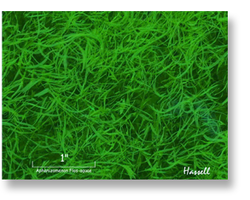
Welcome to our page on scientific research and clinical studies on diet and the specific whole food based products I recommend that can assist with regaining the integrity of a pet’s liver, kidneys and digestive tract
"I was out of answers in trying to solve my dogs health issues. High liver enzymes for years, skin issues, the onset of Cushing's. Both of my dogs suffered. Crap food from Vets, crap advice, ignorance and brainwashing fueled by dog food manufacturers offering incentives to vets to turn a blind eye, at the expense of our dogs' lives. I literally stumbled on to Rick's site and got an education on nutrition, supplementation, and the dog's body's ability to heal itself with these basic factors. In nine months my dogs went from sick to top health.
They are 12 year old Shih-tzu/Maltese mix twin sisters. If you are interested in your dogs having the best chance at a long and healthy life then look at this and commit yourself. You can do it. It will become second nature on food prep and supplement use. The best part is you will have constant guidance available online to all questions, fears and concerns. If you care about your fur baby then follow this. You won't believe it. Good luck. Deeply grateful."
Eric Andersen
Schererville IN
The material on this site is provided for educational and informational purposes only and must not be taken as “medical advice”.
The information and directions in these writings and subsequent emails, individually and collectively, are in no way to be considered as a substitute for consultations with a duly licensed Veterinarian regarding diagnosis and/or treatment of disease and are not intended to diagnose or treat your dog.
Please consult with your Veterinarian for this advice as well as for any Medical Emergency.
In today's climate, changed lifestyles and the increased use of antibiotics are significant factors that affect the preservation of a healthy intestinal microflora. The concept of probiotics is to restore and maintain a microflora advantageous to the human body. Probiotics are found in a number of fermented dairy products, infant formula, and dietary supplements. Basic research on probiotics has suggested several modes of action beneficial for the human body and clinical research has proven its preventive and curative features in different intestinal and extraintestinal diseases. Chronic diseases cause considerable disablement in patients and represent a substantial economic burden on healthcare resources. Research has demonstrated a crucial role of nutrition in the prevention of chronic disease. Thus, positive, strain-specific effects of probiotics have been shown in diarrheal diseases, inflammatory bowel diseases, irritable bowel syndrome, and Helicobacter pylori-induced gastritis, and in atopic diseases and in the prevention of cancer. As the majority of probiotics naturally inhabit the human intestinal microflora, their use has been regarded as very safe. However, in view of the range of potential benefits on health that might be achieved by the use of some probiotic bacteria, major and thorough evaluation is still necessary. In conclusion, probiotics act as an adjuvant in the prevention and treatment of a wide variety of chronic diseases.
Journal of Clinical Gastroenterology: March 2006 - Volume 40 - Issue 3 - pp 270-274 Presentations Probiotics and Chronic Disease Broekaert, Ilse J. MD; Walker, W. Allan MD
The information and directions in these writings and subsequent emails, individually and collectively, are in no way to be considered as a substitute for consultations with a duly licensed Veterinarian regarding diagnosis and/or treatment of disease and are not intended to diagnose or treat your dog.
Please consult with your Veterinarian for this advice as well as for any Medical Emergency.
- Probiotics in the treatment and prevention of Chronic Disease
In today's climate, changed lifestyles and the increased use of antibiotics are significant factors that affect the preservation of a healthy intestinal microflora. The concept of probiotics is to restore and maintain a microflora advantageous to the human body. Probiotics are found in a number of fermented dairy products, infant formula, and dietary supplements. Basic research on probiotics has suggested several modes of action beneficial for the human body and clinical research has proven its preventive and curative features in different intestinal and extraintestinal diseases. Chronic diseases cause considerable disablement in patients and represent a substantial economic burden on healthcare resources. Research has demonstrated a crucial role of nutrition in the prevention of chronic disease. Thus, positive, strain-specific effects of probiotics have been shown in diarrheal diseases, inflammatory bowel diseases, irritable bowel syndrome, and Helicobacter pylori-induced gastritis, and in atopic diseases and in the prevention of cancer. As the majority of probiotics naturally inhabit the human intestinal microflora, their use has been regarded as very safe. However, in view of the range of potential benefits on health that might be achieved by the use of some probiotic bacteria, major and thorough evaluation is still necessary. In conclusion, probiotics act as an adjuvant in the prevention and treatment of a wide variety of chronic diseases.
Journal of Clinical Gastroenterology: March 2006 - Volume 40 - Issue 3 - pp 270-274 Presentations Probiotics and Chronic Disease Broekaert, Ilse J. MD; Walker, W. Allan MD
- Probiotic vs Antibiotic Effectiveness
In a double blind trial, individuals with a mean age of 64 with at least 3 self-reported symptomatic urinary tract infections (UTIs) in the previous year were randomly assigned to receive antibiotic (480 mg of trimethoprim- sulfamethoxazole) once a day or oral capsules containing probiotics twice a day for 12 months. During the trial, the number of UTI episodes fell by 58.5% in the antibiotics group and by 51.4% in the probiotics group.
In the antibiotics group, resistance of E. coli to trimethoprim-sulfamethoxazole and to amoxicillin increased from 20% to 40%. In contrast, resistance to these antibiotics did not occur during probiotic treatment.
Thus, probiotics were nearly as effective as antibiotics for preventing UTI recurrences and did not lead to antibiotic resistance.
Beerepoot MAJ, ter Riet G, Nys S, et al. Lactobacilli vs antibiotics to prevent urinary tract infection. A randomized, double-blind, trial. Arch Intern Med. 2012;172:704-712.
- Probiotics and Gut Inflammation
The intestine's mucosal surface provides a defense barrier against antigens encountered by the enteric route. In this system a balance is generated and maintained between host and microfloral bacteria. In intestinal inflammation, the integrity of the barrier is disrupted, a greater amount of antigens traverses the mucosal barrier, and the routes of transport are altered, possibly evoking aberrant immune responses and release of proinflammatory cytokines with further impairment of the barrier function. Nutritional therapy remains an attractive tool in the management of intestinal inflammation. The advances this past year are related to the ecologic system provided by specific strains of gut microflora, the concept of healthy microflora, and ways in which gut barrier function could be strengthened by consumption of mono-and mixed cultures of beneficial live microorganisms as probiotics.
Current Opinion in Gastroenterology: November 1999 - Volume 15 - Issue 6 - p 534 Immunology - Isolauri, Erika MD, PhD.
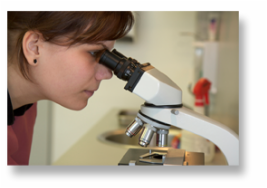
- Blue-Green Algae as an Immuno-Enhancer and Biomodulator
Jenson GS, Ginsberg DI, Drapeau C. Journal on Nutraceuticals and Nutrition (JANA). 2001; 3: 24-30.
Conclusion: Data suggests that blue-green microalgae have immuno-enhancing properties that can be used in the treatment of various diseases.
Summary: This article was a review of many other research articles that studied the beneficial properties of blue-green microalgae. The review articles demonstrated various benefits found from research, including its effects on immunity, therapeutic effects on metabolism, anti-inflammatory, anti-viral, and anti-cancer effects.
Due to the Phycocyanin (a blue pigment) content in blue-green microalgae, all blue-green microalgae can carry some of the same benefits. These include: anti-inflammatory, anti-oxidant, reduced tissue damage, and hepatoprotective (liver protection) effect. PC is a component in all blue-green microalgae but the content in each strain varies. Other components, phytochemicals or chemical properties also vary due to the growing environment making some of the benefits differ between strains.
Various blue-green microalgae research was reviewed for this article, which included a variety of blue-green microalgae strains. Aphanizomenon flos-aquae (AFA) is one strain of blue-green microalgae often studied. The research data showed that AFA increased the activation and mobilization of immune cells, therefore giving our body's better surveillance and protection. The polysaccharides in AFA were found to stimulate macrophage (white blood cells that eat invaders) activity.
The data also demonstrated AFAs ability to alter our fatty acid levels due to its high Omgea-3 fatty acid content. This lowers the arachidonic acid (a fatty acid), which can cause inflammation if too much builds up in the body. AFA was also shown to lower blood cholesterol levels. Besides AFA altering lipid metabolism, it has also been shown to affect sugar metabolism, resulting in a lowering of blood glucose levels.
Overall the data presented demonstrates that blue-green algae is a highly beneficial product. It can help in treating suppressed immune systems or inappropriate immune responses as well as offer multiple other biological benefits to the human body.
Doctors Note: The immune system is one of the most important functions to maintain in our bodies. Many health problems are a result of a malfunctioning or weak immune system. Our bodies need a proper functioning immune system to fight off contaminants and to control those bacteria and viruses that already live in our bodies. When our immune system fails us we can get sick or develop a disease. Once this occurs it becomes much more difficult to get back on track.
Research has shown that there are many benefits that can be offered from blue-green microalgae. Aphanizomenon flos-aquae is a great way to stimulate the immune system and would be a great preventative tool against illness and disease. Besides helping our bodies immunity, AFA is also a great supplement for maintaining good health. Reducing inflammation, cholesterol and blood glucose are just some of the other beneficial properties of AFA.
Jenson GS, Ginsberg DI, Drapeau C. Journal on Nutraceuticals and Nutrition (JANA). 2001; 3: 24-30.
- Effects of the Blue-Green Algae Aphanizomenon flos-aquae on Human Natural Killer Cells
Conclusion: Consumption of freeze-dried Aphanizomenon flos-aquae (AFA) algae resulted in a significant decrease of percent of Natural Killer (NK) cells in circulation two hours after consumption.
Summary: Natural Killer cells are immune system cells. They are scavengers of cells infected with viruses and tumors and they kill them by programmed cell death. NK cells travels through the blood and will go to an infected area when signaled to do so. They are thought to carry out their functions in the spleen, lung and liver parenchyma, and uterine and gut mucosal linings. The usual way of measuring NK activity is by measuring levels in the blood or its ability to kill tumor cells in vitro (laboratory experiment). However since these cells are thought to carry out their functions within the tissues, these methods of measuring NK activity may not be accurate.
AFA has been shown to have protective effect in the AMES test, which is a test that measures the mutagenic potential of chemical compounds. The protective effect of AFA means that it prevented the mutation. It has also been shown that AFA does not have immunosuppressive effects, unlike other strains of blue-green algae. For this study, participants were given 1.5 grams of freeze-dried AFA and after their immune function parameters were measured.
The AFA had an almost immediate effect on blood lymphocytes. NK cells were reduced by 60% after AFA consumption. The mechanism behind this is not known but is most likely due to AFA inducing the migration of NK cells, by activating their adhesion mechanisms. AFA also could have stimulated nerves in lymphoid tissues (tissues associated with immune function) and secretion of neuropeptides, affecting the recruitment of immune cells from circulation. Although the exact mechanisms are not known, this study could conclude that there was an increase in immune surveillance by NK cells after AFA consumption, which could lead to fewer colds and less viral infections.
Doctors Note: Immune cells are essential to human survival. Without these cells we would not be able to fight of illnesses or diseases as well as we do now. Natural killer cells are just one type of immune cell, which can seek out and kill cells taken over by foreign invaders. Immune cells are located throughout our bodies and when signaled they then respond and move to the infected area.
Aphanizomenon flos-aquae can aid in the surveillance, making our immune system more effective. An immune system that can better monitor your body means a healthier life where the foreign invaders our body comes in contact with everyday can be fought off more quickly.
Manoukian R, Citton M, Huerta P, et al. Phytoceuticals: Examining the Health Benefits and Pharmaceutical Properties of Natural Antioxidants and Phytochemicals. Massachusetts: International Business Communications, Inc.; 1998.
- Evaluation of Renoprotective Effect of Aphanizomenon flos-aquae on Cisplatin-Induced Renal Dysfunction in Rats.
Conclusion: The results of this study suggest that the use of organic microalgae can reduce the kidney damage that can occur from the use of the drug Cisplatin.
Summary: Cisplatin (CIS) is a chemotherapy drug, used to treat various malignant solid tumors. However, this drug can also have severe side effects including nephrotoxicity (kidney toxicity). Free radicals (the oxidants that cause damage to our body) play a crucial role in the development of the CIS induced kidney failure. This kidney failure is also closely associated with lipid peroxidation (oxidative damage to cells).
Organic microalgae (AFA) contains a blue pigment called phycocyanin (PC) that has been known to have antioxidant properties. This study was designed to test AFA's antioxidant power and renoprotective potential against CIS induced oxidative stress and kidney dysfunction. The AFA algae was extracted using different solvents. These different extracts were tested in a pilot study to determine which extract had the highest antioxidant activity; the ethanol extract had the most activity and was selected for use in the study.
There were three different concentrations of the ethanol AFA extract (EEAFA), 25, 50 and 100 mg per kg of bodyweight, given to rats in different experimental groups. All of the rats that received the EEAFA had outcomes that restored the kidney function to normal and minimized lipid peroxidation; these positive results were thought to be due to the antioxidant properties of PC. From this data the study was able to conclude that an ethanol extract of AFA has the ability to protect the kidney against damage and reduce lipid peroxidation caused by Cisplatin.
Doctors Note: Cisplatin is a chemotherapy drug that is used to treat a various cancers. This drug can cause multiple side effects including kidney damage, which is a very serious condition that can severely affect someone's life. The kidney has several functions including, remove waste from the body, balance body fluids, release blood pressure regulating hormones and control the production of red blood cells. Damage to the kidneys can cause waste and fluid build up in the body as well as high blood pressure.
Often in the early stages of kidney disease can successfully be treated. Careful monitoring and control of other conditions can help prevent the damage from getting worse. Chronic kidney disease is often treated with medications to slow the progression of the disease. When kidney disease progresses to kidney failure then dialysis or transplantation may be required. Dialysis is a very debilitating process where a machine has to act as the kidney several times per week. Transplantation is typically very successful however it takes a very long time to receive a new kidney for replacement.
Kuriakose GC, Kurup MG. Renal Failure. 2008; 30: 717-725.
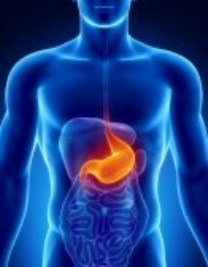
- The First Quantitative Evidence Proving the Efficacy Of Supplemental Enzymes
This research is the first comprehensive study that shows that fungal digestive enzymes substantially increase the level of digestion in the lumen of the small intestine and bioaccessibility
of proteins and carbohydrates. These results not only validate the use of digestive enzymes in cases of impaired digestion, but also show that most healthy adults can benefit by using a digestive enzyme supplement.
Background:
The underlying premise for taking a digestive enzyme supplement is the capacity for better nutrient absorption through enhanced digestion. National Enzyme Company has been advocating this application for over 70 years. Throughout these years, we have collected a plethora of anecdotal and qualitative information backing the use of digestive enzymes. While we were convinced of the efficacy of fungal digestive enzymes, we have been lacking the quantitative information that would prove the same under disinterested scientific scrutiny. To achieve this goal, we embarked on a collaborative effort with TNO of the Netherlands to prove the efficacy of supplemental, fungal digestive enzymes for the digestion of food and absorption of nutrients. The Netherlands Organisation for Applied Scientific Research TNO (TNO Nutrition and Food Research) based in Zeist, Netherlands, is a reputable scientific organization whose mission is to be a link of knowledge between fundamental research and its applications to food, drugs and agrochemicals. To quantify the efficacy of supplemental enzymes, TNO proposed a series of experiments using a computer controlled dynamic gastrointestinal model (TIM).
TIM is a unique patented technology, developed by TNO, that simulates the conditions of the human stomach and the small intestine. Using this technology, we accurately replicated the dynamic environment of the human stomach and the small intestine when food is being digested and absorbed. The stellar feature of this system is that it allowed for sampling at various times during the digestive process, which enabled us to gather information in real time about the extent of digestion and absorption of foodunder various conditions.
The protocols for TIM have been validated. The various studies that have been performed using TIM are well documented in literature. (see references)
The first step in this project was the formulation of a digestive enzyme blend that was generic, yet also effective. To this end, NEC formulators created a blend of fungal digestive enzymes that is the basis of all our digestive enzyme products. In other words, we chose a basic blend of proteases, carbohydrates and lipases. This blend was tested under two sets of conditions to observe digestability and absorption of nutrients. The two conditions were perfect human digestion and impaired human digestion. The TIM system was fed a meal (standard FDA type) with and without NEC digestive enzymes. The extent of digestion was monitored by sampling nutrients (glucose and nitrogen) at various times and at different points in the GI tract.
Results:
The total digestion of carbohydrates is increased nearly 4 fold in the small intestine with fungal digestive enzymes even under perfect conditions.
The digestion of proteins is slightly increased in the ileum and remains essentially the same in the jejunum with NEC fungal digestive enzymes under perfect conditions.
The total digestion of carbohydrates is increased about 7 fold in the small intestine with NEC fungal digestive enzymes under impaired conditions.
The digestion of proteins increases significantly in the small intestine with NEC fungal digestive enzymes under impaired conditions
Conclusion: The aim of the study was to determine the efficacy of an NEC digestive enzyme supplement on the digestibility of proteins and carbohydrates, and the bioaccessibility of nutrients under the following conditions:
1) Healthy human adult digestion (perfect conditions)
2) Impaired digestion. 70% reduced gastric and intestinal
secretions
Results show that NEC fungal digestive enzymes improve the digestibility and bioaccessibility of
proteins and carbohydrates in the lumen of the small intestine, not only under impaired digestive
conditions, but also in healthy human digestion. Furthermore, the test meal fed to the TIM system was an FDA recommended meal, which is smaller in macronutrient content and total calories than the typical American diet. The conservative amount of food used in the experiments, and the corresponding results obtained, further testify to the use of fungal digestive enzyme supplements.
The activity of any digestive enzyme supplement in the small intestine presupposes that the
enzymes in the supplement survive the acidity of the stomach. From the above experiments we
have established that NEC fungal digestive enzymes do survive the acidity of the stomach and
work in the small intestine. In fact, our research has demonstrated that NEC fungal enzymes not
only survive the acidity of the stomach, but also are active in that harsh environment where most
other types of enzymes are inactivated. Therefore, there is no scientific basis for enterically
coating NEC fungal enzymes for general digestive applications. Such action would be detrimental
to the consumer since the coating would prevent the enzymes from working in the stomach.
This research is the first comprehensive study that shows that NEC fungal digestive enzymes
substantially increase the level of digestion in the lumen of the small intestine and bioaccessibility
of proteins and carbohydrates. These results not only validate the use of digestive enzymes in
cases of impaired digestion, but also show that most healthy adults can benefit by using a
digestive enzyme supplement.
Rohit Medhekar, Ph.D. Director of Research and Development, National Enzyme Company, 2004
References
• Havenaar, R. (1999). The model selection tool. Dairy Industries International, 64 (6): 33-36.
• Havenaar, R. and Minekus, M. (1996). Simulated assimilation. Dairy Industries International 61(9): 17-23.
• Havenaar, R., Minekus, M. and Speckmann, A. (1995). Efficacy of Natuphos® phytase in a dynamic computer-controlled model
of the gastro-intestinal tract. Proceedings European Symposium on Feed Enzymes, Noordwijkerhout, Netherlands. pp 211-212.
• Krul, C., Humblot, C., Philippe, C., Vermeulen, M., Van Nuenen, M., Havenaar, R., Rabot, 5. (2002). metabolism of sinigrin (2-
propenyl glucosinolate) by the human colonic microflora in a dynamic in vitro large-intestinal model. Carcinogenesis 23:1009-1016.
• Krul, C., Luiten-Schuite, A., Tenfelde, A., Van Ommen, B., Verhagen, H. and Havenaar, R. (2001). Antimutagenic activity of green
tea and black tea extracts studied in a dynamic in vitro gastrointestinal model. Mutation Research; 474: 71-85.
• Krul, C., Luiten-Schuite, A., Baan, R., Verhagen, H., Mohn, G., Feron, V., and Havenaar, R. (2000). Application of a dynamic in
vitro gastrointestinal tract model to study the Availability of food mutagens, using heterocyclic aromatic amines as model
compounds. Food and Chemical Toxicology 38: 783-792.
• Larsson, M., Minekus, M., and Havenaar, R. (1997). Estimation of the bioavailability of iron and phosphorus in cereals using a
dynamic in-vitro gastrointestinal model. J. Sci. Food Agric. 73: 99-106.
• Marteau, P., Minekus, M., Havenaar, R. and Huis in 't Veld, J.H.J. (1997). Survival of lactic acid bacteria in a dynamic model of
the stomach and small intestine: Validation and the effects of bile. J. Dairy Sci. 80: 1031-1037.
• Minekus, M. (1998). Development and validation of a dynamic model of the gastrointestinal tract. PhD Thesis, University of
Utrecht; Elinkwijk b.v., Utrecht, Netherlands.
• Minekus, M., Marteau, P., Havenaar, R. and Huis in 't Veld, J.H.J. (1995). A multi compartmental dynamic computer-controlled
model simulating the stomach and small intestine. Alternatives to Laboratory Animals (ATLA) 23: 197-209.
• Minekus, M., Smeets-Peeters, M., Bernalier, A., Marol-Bonnin, S., Havenaar, R., Marteau, P., Airic, M., Fonty, G., and Huis in 't
Veld, J.H.J. (1999). A computer controlled system to simulate conditions of the large intestine with peristaltic mixing, water
absorption and absorption of fermentation products. Appl. Microb. Biotechn. 53: 108-114.
• Minekus, M. and Havenaar, R. (1996). In vitro model of an in vivo digestive tract. United States Patent; nr. 5,525,305, dated June 11, 1996.
• Minekus, M. and Havenaar, R. (1998). Reactor system. European Patent No. 0642382. Eur. Patent Bulletin 98/07, Art. 97(4) and
(5) EPC, dated 11.02.98.
• Smeets-Peeters, M.J.E. (2000). Feeding FIDO: Development, validation and application of a dynamic in vitro model of the
gastrointestinal tract of the dog. PhD Thesis Wageningen University. Universal Press, Veenendaal, The Netherlands.
• Smeets-Peeters, M.J.E., Minekus, M., Havenaar, R., Schaafsma, G., Verstegen, M.W.A. (1999a). Description of a dynamic in vitro
model of the dog gastrointestinal tract and an evaluation of various transit times for protein and calcium. ATLA 27: 935-949.
• Smeets-Peeters, M., Havenaar, R., Schaafsma, G. and Verstegen, M. (1999b). Validation of a dynamic computer-controlled in vitro
model of the canine gastrointestinal tract. In: Proceedings World Congress on Alternatives to Laboratory Animal Science, Bologna, Italy.
• Smeets-Peeters, M, Watson, T., Minekus, M., Havenaar, R. (1998). A review of the physiology of the canine digestive tract related
to the Development of in vitro systems. Nutrition Research Reviews 11: 45-69.
• Venema, K., Van Nuenen, M., Smeets-Peeters, M., Minekus, M. and Havenaar, R. (2000). TNO's in vitro large intestinal model: an
excellent screeening tool for functional food and pharmaceutical Research. ErnahrungfNutrition 24 (12): 558-564.
• Zeijdner, E. and Havenaar, R. (2000). The fate of orally administrated compounds during passage through the gastrointestinal tract
simulated in a dynamic in vitro model (TIM). European pharmaceutical Contractor, Febr. isue: 76-81.
• Zeijdner, E.E. and Mohede, I.C.M. (1999). Latest tool for screening new clinical foods. A dynamic, computer-controlled model of
the human gastrointestinal tract is the most up-to-date technology for testing new foods. New World Health 1999/2000: 105.a
• Arkbge, K., Verwei, M., Havenaar, R., Witthˆft, C. (2003). Folic acid and (6S)-5-methyltetrahydrofolate bioaccessibility decreases
after addition of folate-binding protein to yogurt as studied in a dynamic in vitro gastrointestinal model. J. Nutr. 133: 3678-3683.
• Verwei, M., Arkbge, K., Havenaar, R., Van den Berg, H., Witthˆft, C. and Schaafsma, G. (2003). Folic acid and 5-Methyltetrahydrofolate
in fortified milk are bioaccessible as determined in a dynamic in vitro gastrointestinal model. J. Nutr. 133: 2377-2383.
• Verwei, M., Arkbge, K., Mocking, H., Havenaar, R. and Groten, J. (2004). The binding of folic acid and 5-methyltetrahydrofolate
to folate-binding proteins during gastric passage differs in a dynamic in vitro gastrointestinal model. J. Nutr. 134: 31-37.
•Van Nuenen, H.M.C., Meyer, P.D., Venema, K. (2003). The effect of various inulins and Clostridium difficile on the metabolic
activity of the human colonic microbiota in vitro. Microbial Ecology in Health and Disease 15 (2-3): 137-144.
•Venema, K. Van Nuenen, H.M.C., Van den Heuvel, E.G., Pool, W., Van der Vossen, J.M.B.M. (2003).The effect of lactulose on the
composition of the intestinal microbiota and short-chain fatty acid production in human volunteers and a computer-controlled model
of the proximal large intestine. Microbial Ecology in Health and Disease, 15 (2-3): 94-105.
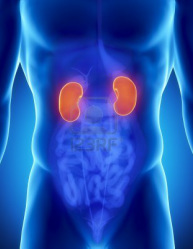
- Coenzyme Q1O for chronic renal failure
Ninety-seven patients (mean age, 48 years) with chronic renal failure (serum creatinine > 5 mg/dl), with a history of declining renal function for at least 12 weeks, were randomly assigned to receive, in double-blind fashion, water-soluble coenzyme Q10 (CoQ1O; 60 mg, 3 times per day orally) or placebo for 12 weeks. The 45 patients who were receiving hemodialysis at the start of the study were encouraged to decrease the frequency or stop dialysis if there was an increase in urine output and a decrease in serum creatinine of more than 2 mg/dl. In the patients receiving hemodialysis and CoQ1O, the mean serum creatinine concentration decreased from 9.5 to 6.7 mg/dl; mean BUN decreased from 88.2 to 79.8 mg/dl; mean creatinine clearance increased from 40 to 54.9 ml/min; and 24-hour urine output increased from 1,300 to 1,920 ml. Renal function tended to worsen in hemodialysis patients receiving placebo, and the differences in the changes between groups were significant (p < 0.01 to p < 0.001). Significant improvements in each of these parameters relative to the placebo group were also seen in the non-dialysis patients treated with CoQ1O. The number of patients receiving dialysis decreased from 21 to 12 in the CoQ1O group, and remained unchanged at 24 in the placebo group (p < 0.02). Eighty-one percent of the patients receiving CoQ1O had a positive response to treatment.
Comment: These results suggest that CoQ1O can improve renal function and reduce the need for dialysis in patients with chronic renal failure. The public-health implications of this study are enormous, considering that chronic renal failure is a serious and debilitating disease and that the annual cost of dialysis in the United States is more than $22 billion.
According Dr. Singh, the lead author of this study (Interview with Kirk Hamilton; Clinical Pearls News, August, 2001, pp. 128-9), CoQ1O is usually effective if pre-treatment urine output, with or without furosemide, is at least 1,000 ml/day. However, if urine output is less than 500 ml/day, then CoQ1O usually does not work, presumably because the kidney has been irreversibly damaged. Dr. Singh recommends that all patients with renal failure take 180 mg/day of water- soluble CoQ1O if their urine output is greater than 500 ml/ day on dialysis. If urine output increases to 1,000 ml/day within 12 weeks, then CoQ1O is likely to be effective. Patients should be able to stop dialysis within 12-48 weeks if the urine output goes above 1,500 ml/day. If urine output does not increase in 12 weeks, then CoQ1O is unlikely to be effective.
While the mechanism by which CoQ1O improves renal function is not clear, it may work by improving cellular bioenergetics.
References:
Singh RB, et al. Randomized, double-blind, placebo-controlled trial of coenzyme CQQ1O in patients with end-stage renal failure. JNutr Environ Med 2003;13:13-22.
Townsend Letter for Doctors and patients - October 2005, p. 26.
|
Free "Canine Health, Naturally" Email Series
Discover what you need to know to reverse your dog's degenerative disease, naturally! Give your pet extraordinary health that lasts a lifetime. |
NOTE: Your email address will never be rented, traded, or sold. Privacy Policy.
|
• Improved Digestion for rescued animals at the Rocky Mountain Wildlife Conservation Center by incorporating the organic microalgae to the animals’ diet:
For the past Six years, Rocky Mountain Wildlife Conservation Center (RMWCC) has incorporated organic micro algae into its Food Plan for the Great Cats and Bears who have been rescued by the non-profit sanctuary.
Noticeable changes for the animals at RMWCC
Noticeable changes for the animals at RMWCC

In 1999, RMWCC teamed with the Animal Connection Network to provide added value to the diets of the animals the Center has saved. Many, many animals have prospered from the inclusion of this product in their diets. In particular, our organic microalgae was directly responsible for a remarkable story of swift, dramatic improvement – and full recovery – of a Mountain Lion who was rescued from living in sub-zero conditions in Minnesota. The owner of this animal allowed him to become frost-bitten from lack of fur, a condition exacerbated by rough, bleeding skin.
“Kiowa,” a six year old Mountain Lion, was rescued along with two Tigers, a Black Leopard, and another Mountain Lion, from a private owner in Minnesota. A law was recently passed in that state making it illegal to own exotic cats and bears without the proper licensing.
(RMWCC has made a number of rescue trips to Minnesota this year because of this new law.)
“Kiowa,” a six year old Mountain Lion, was rescued along with two Tigers, a Black Leopard, and another Mountain Lion, from a private owner in Minnesota. A law was recently passed in that state making it illegal to own exotic cats and bears without the proper licensing.
(RMWCC has made a number of rescue trips to Minnesota this year because of this new law.)

All of the animals from this particular rescue in February, 2005, were extremely thin, and some were nervous and afraid of people. “Kiowa” the Mountain Lion had added stress – his entire hind quarters were stripped of any fur, and he had scabs and bleeding sores throughout that area of his body. He lived outside in sub-zero temperatures all winter, with a small lean-to wood shelter, prior to being rescued by RMWCC. As a Mountain Lion, however, in his natural habitat in the wild, he would not have even looked for a den, as only pregnant mothers seek dens.
Something was horribly wrong with Kiowa’s nutrition and way of life on the Minnesota farm where he was living!
Something was horribly wrong with Kiowa’s nutrition and way of life on the Minnesota farm where he was living!
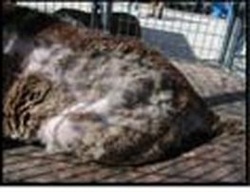
Upon arriving at Rocky Mountain Wildlife Conservation Center, Kiowa was given a large pen with an insulated house, and immediately put on RMWCC’s special diet of a nutritious blend of meats, with organic microalgae added as a supplement. Improvement in his skin and coat became noticeable very quickly. Not only did Kiowa begin to re-grow the fur he was missing, the sores and bleeding spots began to heal, and fur began to grow in those wounded areas as well.
Within five months, Kiowa has re-grown all his fur, and he shows no signs of the difficulty he had with his skin. He has also gained weight, and has become friendly and sociable – quite unlike his state when he was rescued from Minnesota earlier this year.
Organic microalgae has helped tremendously to give Kiowa his health back, and has contributed to his becoming stress-free and happy in his new home at RMWCC.
Thank you!
Within five months, Kiowa has re-grown all his fur, and he shows no signs of the difficulty he had with his skin. He has also gained weight, and has become friendly and sociable – quite unlike his state when he was rescued from Minnesota earlier this year.
Organic microalgae has helped tremendously to give Kiowa his health back, and has contributed to his becoming stress-free and happy in his new home at RMWCC.
Thank you!

“Kiowa” has since recovered fully - and has a rich, beautiful coat - and amazingly shows no sign of the hideous condition he arrived in!
Some of the ways Captive Wildlife at Rocky Mountain Wildlife Conservation Center have benefited from organic microalgae:
Organic microalgae has been a real blessing for the animals at the Rocky Mountain Wildlife Conservation Center, and we thank you for all your wonderful support!
- Metabolic Bone Disease (a common - and sometimes deadly - problem for captive wildlife raised on milk replacement products) - organic microalgae helps advanced conditions and reverses those in cubs.
- Skin and Coat Conditions - Animals suffering from being kept in toxic situations (roadside stands, with constant diesel gas fumes) and other small enclosed cages suffer a variety of maladies - loss of hair, frostbite, stress - organic microalgae improves and often remedies completely such conditions.
- Malnourishment - nearly all captive wildlife are subject to malnourishment if they are kept outside licensed zoo and accredited sanctuary systems. Even "enough" food is not usually the "right" food. organic microalgae stimulates appetites and food absorption, improving the overall metabolism of the Animals.
- Arthritis and Other Joint Conditions - In addition to arthritis, captive wildlife in concrete cages have no chance to exercise in a naturalized habitat. Pus sacs and associated pain are common in the joints, especially elbows, of Great Cats who have only concrete to lay on.
Organic microalgae goes a long way toward relieving the pain of these conditions, and improving them.
Organic microalgae has been a real blessing for the animals at the Rocky Mountain Wildlife Conservation Center, and we thank you for all your wonderful support!